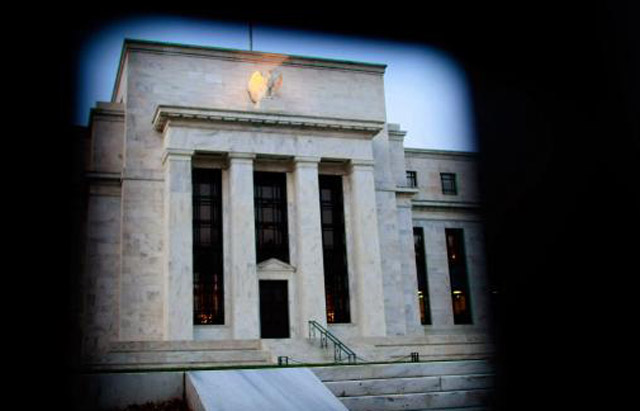CHICAGO – In anticipation of the scariest week of the year, HollywoodChicago.com launches its 2024 Movie Gifts series, which will suggest DVDs and collections for holiday giving.
System is Broken in ‘Money for Nothing: Inside the Federal Reserve’
 Rating: 3.5/5.0 |
CHICAGO – Wealth inequality has never been higher, and much of it has to do with how the Federal Reserve Banks of the United States continues to allow the privatization of financial profits and taxpayer bail-outs (socialism) if these financial industries take a loss. This “too big to fail” equation is a result of policies in “Money for Nothing: Inside the Federal Reserve.”
This is cold slap in the face for anyone believing in the dream of democracy and governmental checks and balances. The collection of countries and city states that make up the world exist mainly to feed the wealth of the upper one percent, and “Money for Nothing” exposes how those policies could lead to another collapse – this one with no bailout circumstances to fall back on, because there will be no monetary worth left. These are hard truths, and it does point towards our own humanity – in the sense that human beings who manage pools of money do so to make sure that they are set up, and their friends in the financial industries are also, but beyond that let the rest of us eat cake.
The history of the Federal Reserve is based on historical formations of “central banks” in Britain and Germany, which are designed to prop up lending and savings institutions in times of financial crisis. The upstart U.S.A. did not have such a system in place, and the result were up and down financial shifts that created market instability. Thus the Federal Reserve System was created in 1913, and created 12 regional “banks” that would monitor the cash flow of the United States.
 Photo credit: Liberty Films |
Since then, the role of the Federal Reserve has evolved its role, mostly because of the severe economic trauma of the 1930s Depression. Basically it serves to put cash into the market in a downturn – low interest rates – and raise those rates to modify growth in strong economic circumstances. That formula has been increasingly obscured through complex and unregulated derivatives trading, housing bubbles and bail-outs for risky institutions that are ‘too big to fail.”
The system is gamed and there is not much of a solution offered to that gaming, unless the persons with huge wealth are willing to modify moneymaking and take less. It’s unlikely to happen. So what America is face with is the potential for another bubble burst, but this one would strike at the core of government debt, which would leave no capital for bail-outs, Medicare, Social Security and even defense – who will protect the wealthy then?
The documentary is informative, in a way that is uniquely unsettling. The majority of citizenry are not financial experts and approach life as ‘I earn what I get.’ Those are the suckers that the wealth vultures leech upon, and it is the reason that wages are stagnated, unemployment remains a flat line and quality of life for the majority of the U.S. citizens is plummeting. A wealthy person, for example, can fund information outlets that puts out propaganda (healthcare reform is bad!) that scares a lower income class to vote with the wealthy, even though the policies that result will make their lower income lives worse.
Money is power, and basically that is what all the exposition and talking heads in this documentary cannot undo. And it is a power based on keeping that wealth, not allowing collectives like “government” and the “people” to get in their way. In the willingness of the Federal Reserve to go along with this – as is distinctly pointed out in the documentary – is to render its power insoluble, except to keep shoveling money at those “too big to fail.”
 Photo credit: Liberty Films |
Is there a light at the end of this tunnel, that is not an oncoming train? Will it become about personal safety? Because that is the only kick in the pants that seems to generate change. It is pointed out that in the film that the U.S. was at a near perfect economic point in the mid-1960s, and then Viet Nam emptied the treasury. – and progressing into Iraq, Afghanistan, etc. It becomes a question of what is the military exactly protecting us from as it empties our vaults?
“Money for Nothing” is a pessimistic film, but a must see for those interested, which most likely will be a demographic that will be least affected by the circumstances in the film. The storm is coming Dorothy, and there is no place like Oz over the rainbow.
 | By PATRICK McDONALD |


